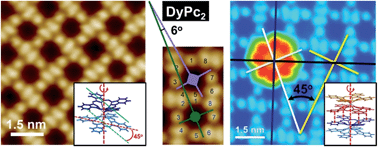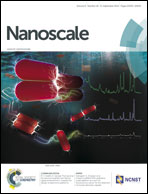Low-temperature scanning tunneling microscopy study of double-decker DyPc2 on Pb Surface
Abstract
Low-temperature scanning tunneling microscopy (STM), scanning tunneling spectroscopy and dI/dV mapping techniques have been applied to study double-decker DyPc2 molecules on Pb(111) films grown on silicon wafers. The DyPc2 molecules firstly self-assemble into a monolayer where two neighbouring molecules form an azimuthal angle of 6°. Scattered DyPc2 molecules in the second layer can be stabilized on top of the first self-assembled monolayer, adopting a co-axial alignment with the underlying molecules. With the reference to the new layer assembled by Pc molecules generated by the cracking of DyPc2 molecules on the substrate at or above room temperature, the molecular configuration can be directly deduced from STM imaging. The two Pc ligands in the same double-decker molecule rotate 45° with respect to each other. The dI/dV mapping of the individual DyPc2 molecules in the second layer shows that they can appear as either four-lobed or eight-lobed features in the STM images depending on the bias voltage employed.


 Please wait while we load your content...
Please wait while we load your content...